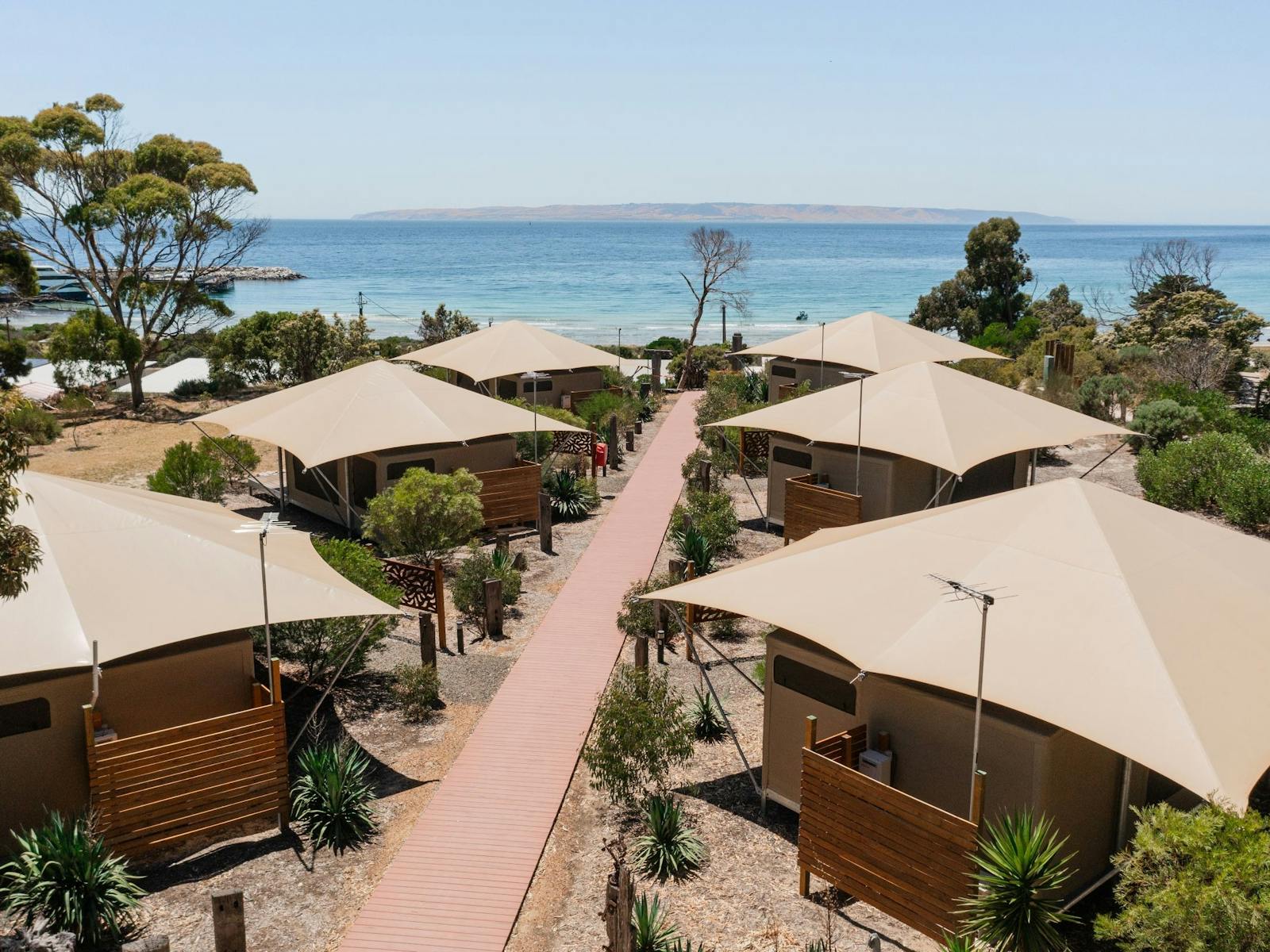Archaeology discoveries on Kangaroo Island
In 1903, over 100 years after Captain Matthew Flinders landed on Kangaroo Island, archaeologists unearthed Aboriginal stone hammers at an excavation site at Rocky River. This was the first evidence to show extensive Indigenous occupation on the island and dated back 16,000 years. It is thought that the original Indigenous inhabitants only disappeared from Kangaroo Island as recently as 2,000 years ago. It is not known why they left.
Other archaeological discoveries on Kangaroo Island included cave shelters where it is thought the Kartan people took refuge from the elements. Many thousands of artefacts, along with middens—ceremonial sites marked by piles of shells and animal bones—and campfire hearths were also found. There were even ‘industrial sites’, marked by discarded shards of stone flakes, where there was evidence to show that tools had been shaped from stone.
Stories relayed from generation to generation by the mainland Indigenous people refer to locations on Kangaroo Island and talk about long-term environmental change. This oral history evidence confirms that Kangaroo Island was once part of the mainland and was separated from it by rising sea waters.
The arrival of the first European settlers on Kangaroo Island
When the island was discovered by explorers Captain Matthew Flinders in 1802 and French Commander Nicholas Baudin soon afterwards, it was uninhabited. However, they did discover it to be abundant with Australian native animals, including kangaroos and seals.
Soon after hearing about the plentiful seals and whales in the waters surrounding the island, American and European whaling and sealing vessels arrived to take advantage of them. One of their settlement camps was located at the place now known as American River.
It is alleged that sealers kidnapped several Indigenous women from the mainland and Tasmania as sexual and domestic slaves. A story from this time tells the sad tale of three Ngarrindjeri women and a baby who tried to escape by crossing the strait to the mainland. Two of the women used a small rowboat, but there wasn’t enough room in it for the third, so she tied her baby to her back and attempted to swim the 14-kilometre distance across the strait. Tragically she drowned.
Aboriginal People on Kangaroo Island after colonisation
Following the colonisation of South Australia and Kangaroo Island in 1836, the Indigenous women became respected for their knowledge of the lands, and as avid hunters and gatherers. Three Tasmanian women from the initial kidnapping—Sal, Suke and Betty—remained on the island until the 1870s.
Although records of Indigenous people on the island are incomplete, in 1841, the first census of South Australia listed thirteen native women and children living on Kangaroo Island out of a total population of 90.
These pioneering Aboriginal women continued to live a traditional lifestyle on the island, clearing the land with fire and hunting with dogs. Betty’s descendants still live on Kangaroo Island and know her tragic story.
Although the women were treated unjustly, their lives are commemorated on Kangaroo Island. There are creeks, gullies, and paddocks across the island with names that recall the stories of the Aboriginal women and their sealer partners.
Appreciating Kangaroo Island’s Aboriginal history
The Indigenous history of Kangaroo Island is steeped in mystery and tragedy. A lot of what is known however, has been corroborated by stories passed down from Aboriginal elders and from archaeological finds. Sadly, there is not a lot of information about the island’s Indigenous heritage in the museums on Kangaroo Island.
There are a few historic sites around Kangaroo Island where evidence of Indigenous history has been found. These include:
Rocky River archaeology excavation site
Hawk’s Nest near Murray Lagoon
Limestone caves at Seton Site.
Learn more about the discovery and early European history of Kangaroo Island














